 Skagit County Health and Planning Departments allowed construction of a rainwater collection system as the primary source of water for construction of a new family residence. As many as 5,000 property owners may now have a solution to a well moratorium that has been imposed in the river basins because of instream flow rules.
Skagit County Health and Planning Departments allowed construction of a rainwater collection system as the primary source of water for construction of a new family residence. As many as 5,000 property owners may now have a solution to a well moratorium that has been imposed in the river basins because of instream flow rules.
Chris Webb of Herrera Environmental designed the 10,000 gallon potable system to supply the residence with enough water to support a family of four, year round without another water source. Filtration, along with ultra violet disinfection, will treat the rainwater to a quality standard which surpasses groundwater and most well water. Water samples will be taken and sent to a lab for testing with results shared with the Skagit County Department of Health.
RainBank will work with Skagit County to help set standards for rooftop collection for potable use, with the hopes that the practice will allow property owners in the affected river basins to have a viable source of clean, safe drinking water and be able to develop their properties. Other counties in the Puget Sound region have recognized rainwater collection as a supplementary source to wells, city water, and community water sources and sole source use in conditions that a traditional source is not available.
RainBank Rainwater Systems, with 15 years experience in designing and construction of sustainable, potable rainwater collection systems is committed to educating the public and county officials in the benefits of rainwater collection.
Photo Credit: Abhinaba Basu from Redmond, United States – Skagit Tulip Festival Panorama Uploaded by X-Weinzar


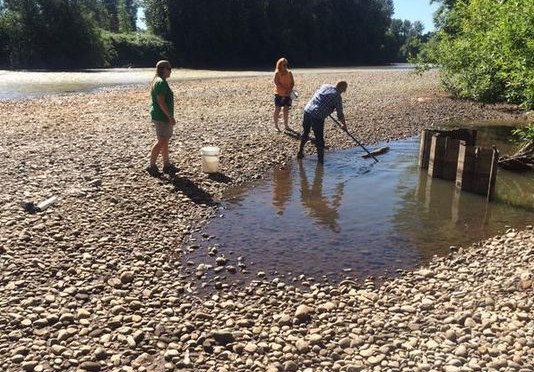
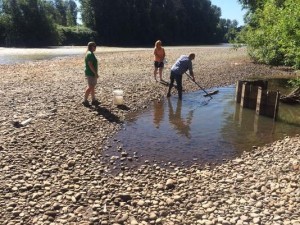 Snohomish County has over 1,000 water districts that are close to drying up, which ramps up the need to purchase potable water from the city of Everett. Spada Lake is dangerously low, which jeopardizes water availability for fighting fires
Snohomish County has over 1,000 water districts that are close to drying up, which ramps up the need to purchase potable water from the city of Everett. Spada Lake is dangerously low, which jeopardizes water availability for fighting fires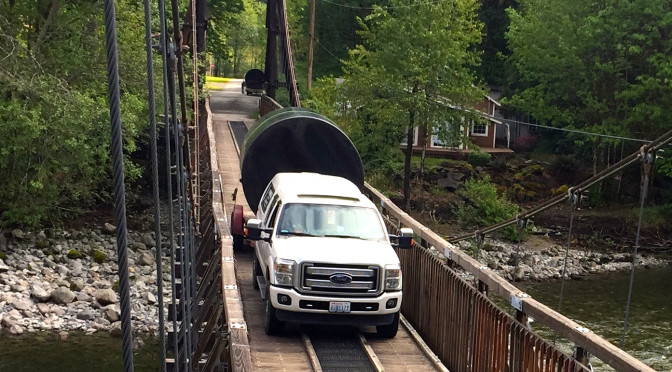
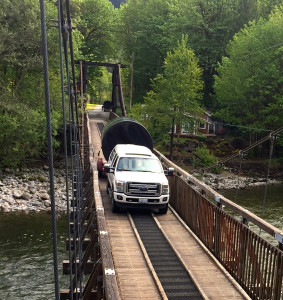 RainBank Rainwater Systems was contracted to install a 10,000 gallon, sole source, potable rainwater catchment system in Baring WA, just east of Index. The system was designed by Chris Webb, PE of
RainBank Rainwater Systems was contracted to install a 10,000 gallon, sole source, potable rainwater catchment system in Baring WA, just east of Index. The system was designed by Chris Webb, PE of 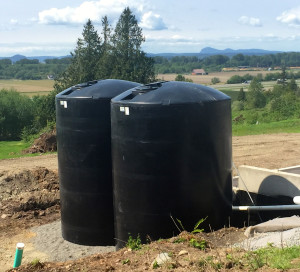 RainBank Rainwater Systems has recently begun construction of another 10,000 gallon, sole source, potable rainwater collection system in the Skagit River Basin, which has been affected by the in stream flow rates, along with a well drilling moratorium. The system was also designed by Chris Webb and Herrera Environmental Consultants for a single family dwelling. Again, the system will provide whole house potable water as the only source of water. The house is 3500 square feet, so 33.2″ annual rainfall will meet the daily demand for 95% of the days in this model with no change in use. The reality is, that the occupants would decrease usage during times of drought and therefore the 2 – 5,000 gallon cistern volume is considered capable of supplying 100% of domestic use.
RainBank Rainwater Systems has recently begun construction of another 10,000 gallon, sole source, potable rainwater collection system in the Skagit River Basin, which has been affected by the in stream flow rates, along with a well drilling moratorium. The system was also designed by Chris Webb and Herrera Environmental Consultants for a single family dwelling. Again, the system will provide whole house potable water as the only source of water. The house is 3500 square feet, so 33.2″ annual rainfall will meet the daily demand for 95% of the days in this model with no change in use. The reality is, that the occupants would decrease usage during times of drought and therefore the 2 – 5,000 gallon cistern volume is considered capable of supplying 100% of domestic use.